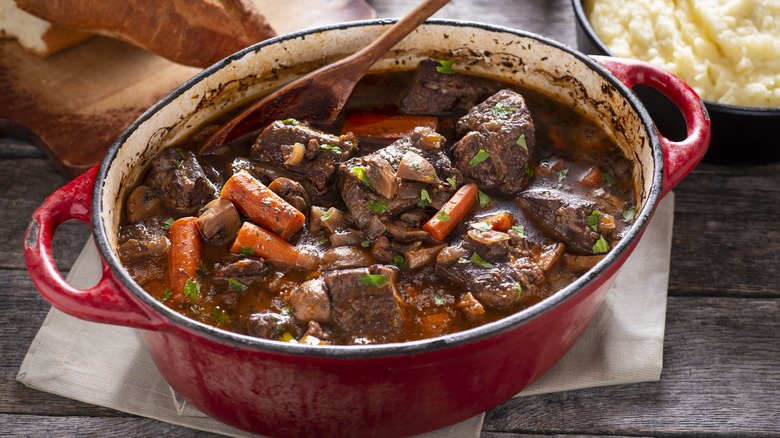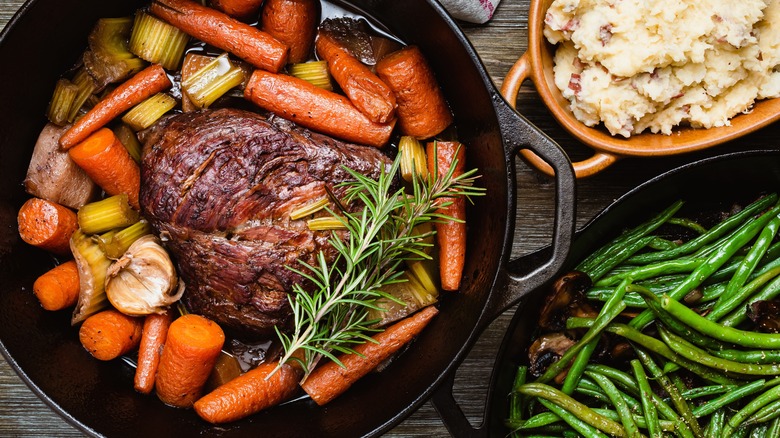How You Should Be Adding Ingredients In A Dutch Oven
Making dinner in a Dutch oven can feel like an old-fashioned way to cook, harkening back to colonial times when a cast iron pot was buried under the embers of the hearth. It's still an indispensable tool for cooks today, offering a heavy-bottom pot that can braise, roast, or stew meals while maintaining a steady heat. Although the Dutch oven is such an old and ubiquitous pot, there are still some rules you need to follow to get the most out of it.
One solid rule that shouldn't be broken? Don't add all of your ingredients at once into the pot. While a Dutch oven can look and feel like a stove-based version of a slow cooker, you need to layer in ingredients with a purpose, rather than dumping it all in and letting it cook. There are manifold reasons to do this.
For example, if you don't cook off the excess moisture from your vegetables before adding in the other elements, you'll waterlog the dish, making it mushy and bland in flavor. Moreover, if you don't take the opportunity to sear off the meat before crowding the pan, you're losing the lovely taste that comes from the Maillard reaction.
What order to add ingredients for maximum flavor
No matter what recipe you're working with, whether it's a pot roast, beef stew, or braised beans, you should always start with browning the meat. Depending on the cut or type of meat, you may need to do this in batches, so that the pan doesn't get overcrowded and begin releasing too much liquid. Otherwise, you'll steam your protein rather than searing it. This is all to ensure not that you're cooking your meat, but getting that caramelized crust that makes everything taste better. You'll then remove the meat from the pot for the next layer of flavor.
Here is when you should sweat off the vegetables and aromatics. Depending on how much fat you render off your protein of choice, you'll already have a good bit of fat to sauté your vegetables in. For celery, onions, and peppers, you just want to sauté them until translucent, which removes plenty of water from the equation. If you find your aromatics sticking, you can deglaze the pan with a bit of wine or stock. From there, you can proceed how you like.
By searing the meat and sweating the vegetables, you've built in numerous layers of flavor that will take your Dutch oven dish to the next level.

